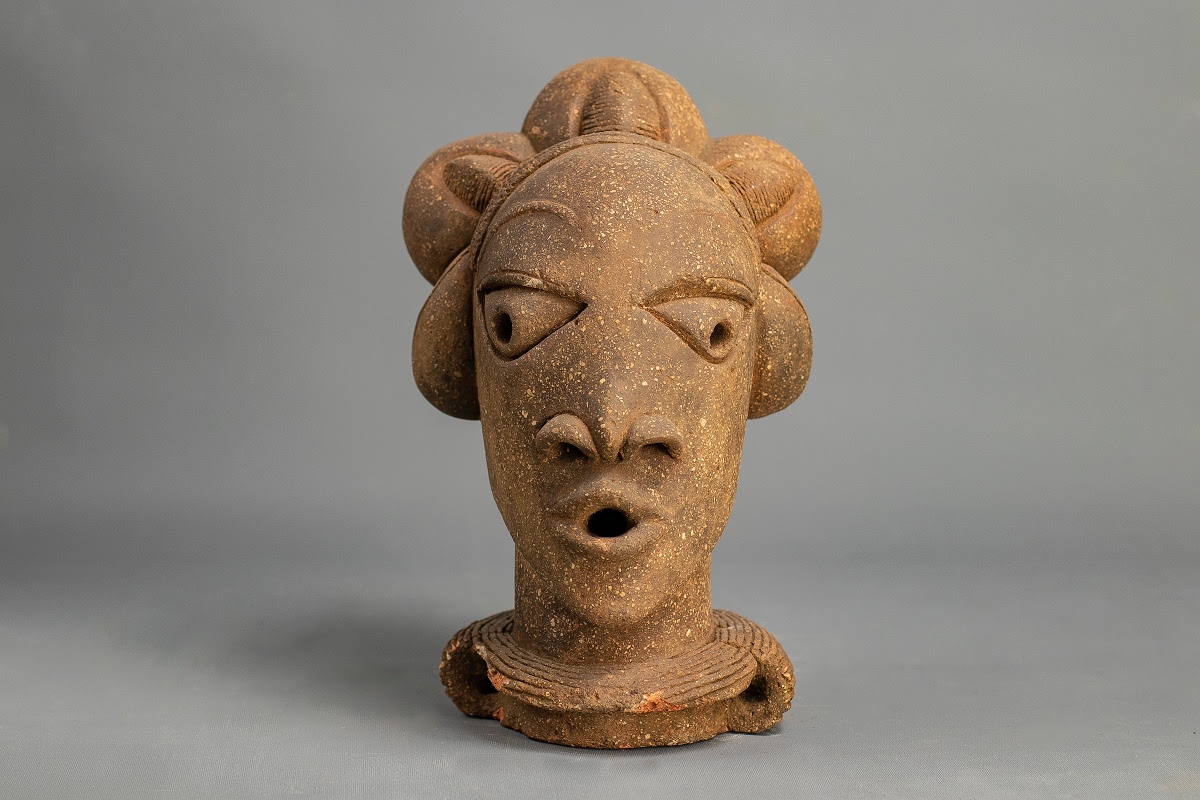During a mining operation in 1928, a tin miner named Colonel Dent Young discovered pieces of dried clay near a small village in what is now Kaduna State. These pieces of sun-baked clay hinted at an earlier civilisation previously unknown to historians.
In later years British archaeologist Bernard Fagg brought to light a plethora of sculptures representing human figures, animals and fantastic creatures, each with exaggerated features such as triangular eyes, elaborate hairstyles and intricate jewellery.
These figures, which were believed to have existed from around 1500 BCE to 500 AD, came to be known collectively as Nok Art The sculptural pottery produced by the Nok culture not only provides a glimpse into the earliest records of archaeology but also points to evidence of an Iron Age civilisation within West Africa.
“These findings challenged the dominant narrative of the emergence of complex societies in sub-Saharan Africa and demonstrated the vibrancy of its artistic expression,” noted Adebayo Usman, an art historian at the US-based Kimbell Art Museum.
The purpose of these terracotta figures has remained a bone of contention among historians and archaeologists for decades. Some have argued that the sculptures served religious or ritual purposes, as in homage to an ancestor. Others, instead, reckon that they might have been used as grave markers or a talisman to ward off crop weakness, infertility and diseases.
Beyond their artistic achievements, the Nok were innovators of iron smelting, as evidence of ironworking goes back as early as 600 BCE at sites such as Taruga. This located the Nok culture among the earliest known centres of ironworking in sub-Saharan Africa.
Usman credits this ability to the ingenuity of the Nok people, which “not only revolutionised tool-making but also made great impacts on farming practices and sociological development.”
Despite the groundswell of interest in Nok art in the years since Fagg’s discoveries, much of the Nok culture remains a mystery to scholars. Partly this is due to the absence of written records, which has caused scholars to recreate the Nok culture and civilisation from the material culture.
Several theories suggest a change in environmental patterns or a depletion of resources around 500 CE may have accelerated the culture’s decline. Connections have been established between the Nok art and the later Benin brasses and Yoruba art.
The stylistic semblance between the Ife and Benin artworks and Nok terracottas indicates the latter’s status as a foundation of African art.
The Nok artefacts are still preserved in most of the museums around the world, ambassadors of Africa’s artistic heritage, although their looting and illicit trafficking pose barriers to their conservation of this heritage.
The repatriation of Nok sculptures has continued in order to keep them a source of pride and study for generations to come.
The Nok culture’s artistic and technological heritage offers invaluable insights into early African civilisations. The Triangular-eyed Sculpture, for example, features an elaborate hairstyle and jewellery, suggesting a culture that prioritised adornment and status. Terracotta sculptures stand as a testament to human creativity and continue to inspire admiration and scholarly inquiry.
“The art and technology of the Nok culture are not just relics of the past,” says Usman, “but are integral to understanding the complexities and contributions of early African societies.”
In 1928, Colonel Dent Young discovered pieces of dried clay in present-day Kaduna State, leading to the revelation of the Nok culture, an early civilization in sub-Saharan Africa dating from around 1500 BCE to 500 AD. British archaeologist Bernard Fagg uncovered numerous terracotta sculptures of humans, animals, and mythical creatures, known as Nok Art, characterized by exaggerated features like triangular eyes and elaborate hairstyles. These artifacts challenge previous perceptions of complex societies in Africa and are linked to an Iron Age civilization due to evidence of iron smelting by the Nok.
The function of these terracotta figures remains debated, with theories suggesting religious or ritual uses, grave markers, or talismans against diseases. Despite significant interest since Fagg's discoveries, the Nok culture is still not fully understood, primarily due to a lack of written records. Environmental changes or resource depletion may have led to its decline around 500 CE. Connections with later Benin and Yoruba art suggest the Nok's influence on African artistic heritage.
The Nok artifacts, important symbols of African heritage, are housed in global museums but face issues of looting and illicit trafficking. Efforts for their repatriation continue, acknowledging their significance to African history. The Nok culture's art and technology provide essential insights into early African societies, affirming that these are not mere relics but integral to understanding the region’s historical complexities and contributions.






